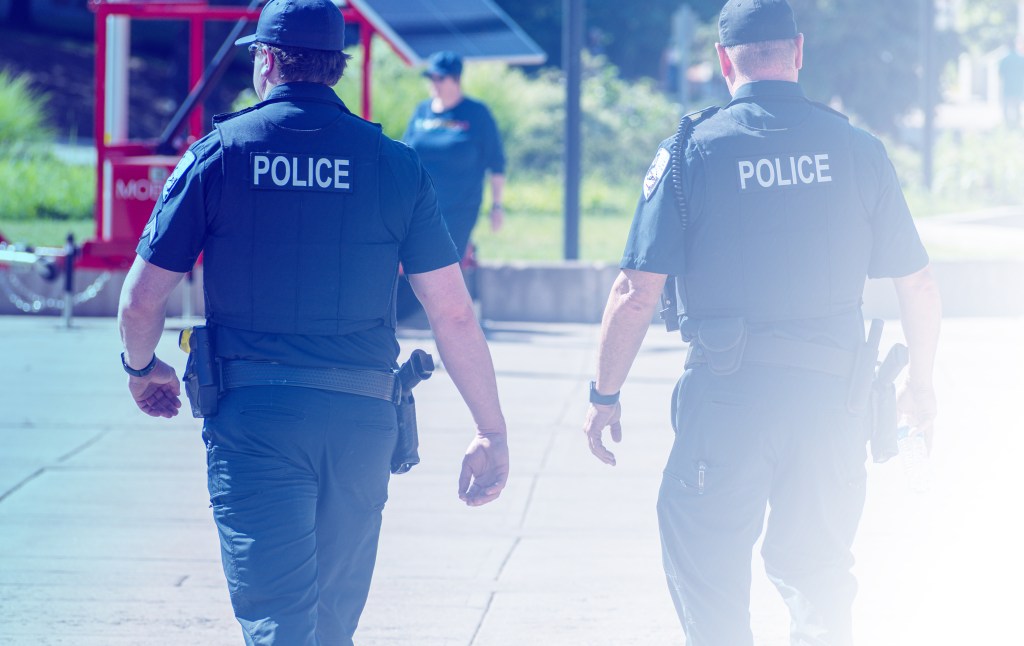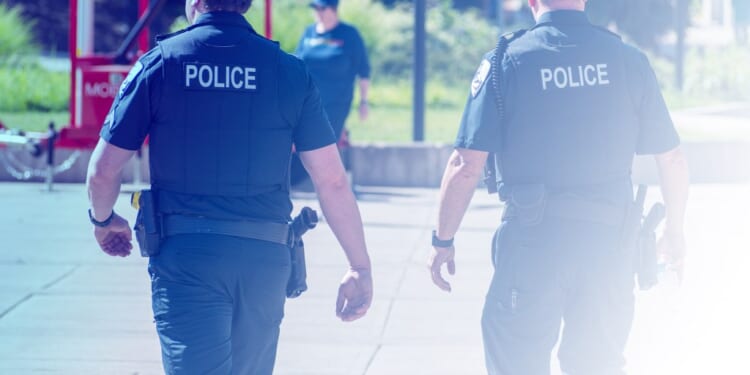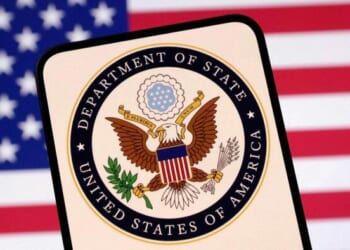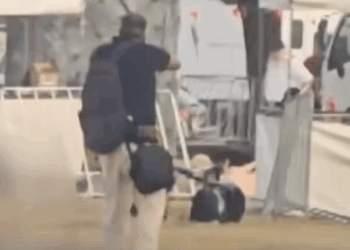
Is federal intervention necessary to restore law and order in American cities? In some ways, yes; in others, no. I don’t mean to get all “lawyery” about it, but the question is somewhat loaded. After all, what do we mean by “necessary”? Do I think cities could maintain adequate levels of public safety without a muscular federal law enforcement presence? Yes. Have many cities failed to live up to their potential in significant ways? Also yes. Will those cities cease to exist, or devolve into completely lawless Thunderdomes, without federal help? Almost certainly not.
So, for the purposes of this exchange, I’m going to take the word “necessary” to mean that the more aggressive posture recently taken in some jurisdictions—like Washington, D.C.—by the federal arm of the law can add real value on the public safety front. The reasons for this are simple: Many cities have abdicated their enforcement responsibilities and/or actively undermined federal law enforcement priorities. This has created a vacuum into which federal authorities can (and should) step.
The most helpful federal interventions can take multiple forms.
“Many cities have abdicated their enforcement responsibilities and/or actively undermined federal law enforcement priorities. This has created a vacuum into which federal authorities can (and should) step.”
Rafael A. Mangual
“Simply stated, there was and is no ‘crime emergency’ in any major American city targeted by the Trump administration for National Guard deployments.”
Patrick G. Eddington
But before we get into that, a note of caution: It’s important for humility to inform the expectations authorities should set for the public on this front. Valuable though federal law enforcement efforts in cities may be (even if only at the margins), many of the improvements associated with those efforts will be concentrated in the short term and limited in scope. Expectations about how much safer federal efforts can make city streets should reflect a proper understanding of the limited nature of federal resources and jurisdiction.
The federal law enforcement surge in Washington, D.C., this past summer is a perfect illustration of these realities. The Trump administration flooded the chronically under-policed city with federal law enforcement agencies and National Guard units. During the surge, many crime categories saw sharp declines compared to the same periods last year. By such measures, the operation was a success (Even if we can’t parse out exactly how much of the declines were attributable to federal efforts, their magnitude and timing are too pronounced to reflect mere coincidence). But federal resources are not unlimited, and so you can expect that trends will eventually start regressing back toward the pre-surge trajectory (if they haven’t already) with the end of President Donald Trump’s “crime emergency” last month. Such is the nature of surges. But that doesn’t mean they’re not worth doing. Summertime surges in high-crime enclaves can provide concrete relief to communities during a time in which victimization risks are particularly pronounced. The short-term benefits of a well-executed surge can also provide an important example for other jurisdictions to follow.
We must also acknowledge that the impact of federal interventions will be limited because federal jurisdiction is narrow. Indeed, most of a given city’s crime problem is going to be a function of offenses that violate state and local laws, for which federal officials don’t have the power to make arrests. The Washington, D.C., surge was possible in part because the federal government’s jurisdiction covers the District. But, in every other American city, federal enforcement agencies must stay within their much narrower jurisdictional authority, which means they’ll have to focus on a narrower set of offense categories over which federal law gives them enforcement authority.
That federal jurisdiction is limited doesn’t mean there isn’t plenty for the feds to work with, however. Two crime categories in particular—drug offenses and gun offenses—are ripe for federal intervention in cities in which enforcement has been deprioritized. This is because the federal government has concurrent jurisdiction over both types of crimes, meaning that it can fill enforcement gaps left by progressive prosecutors and overly lenient judges without any special arrangements. This has proven an effective workaround for years. One example that comes to mind is former U.S. Attorney for the Eastern District of Pennsylvania William McSwain’s decision to shift his office’s priorities to take on more gun cases after District Attorney Larry Krasner began diverting more and more gun offenders out of the system. Another is when the former acting U.S. Attorney for the Eastern District of New York, Seth DuCharme, worked with the NYPD to do the exact same thing in response to a crime surge that followed Brooklyn DA Eric Gonzalez’s push to divert more gun offenders out of the system.
Focusing more resources on the development of joint task forces with local law enforcement agencies—with a focus on using federal predicates to target violent gangs—is another worthwhile tactic that the Trump administration can, and I suspect will, make more use of. Joining forces with local agencies, if possible, will boost the value of a federal intervention, because those agencies can share intelligence that is harder for the feds to develop on their own. The Memphis Safe Task Force, established last month by a presidential executive order, has resulted in nearly 1,500 arrests and the seizure of nearly 300 illegal guns in just about a month, providing a great example of the good such collaborations can do.
Some of the most valuable intelligence local partners can share will relate to the organized criminal gangs operating in the jurisdiction in question. Gangs have been wreaking havoc on urban America for far too long. Even less-organized street crews can be responsible for outsized shares of a city’s violence. Identifying violations of federal law, like drug trafficking, can be an important entry point for federal prosecutors to make cases that will result in what are generally referred to as “gang takedowns.” One study of these prosecutions published in 2021 found that, in New York City, the takedowns “explain nearly one quarter of the decline in gun violence in New York City’s public housing communities over the last eight years.”
There are multiple benefits here. First, by pushing more street-level offenders into the federal system, authorities can get around misguided criminal justice reforms enacted at the state and local level, as well as irresponsibly offender-friendly prosecutors who campaigned on promises to functionally decriminalize whole categories of crime. The value of this approach can be experienced even before a conviction, because pretrial detention on public safety grounds is a likelier outcome in federal court than in many city courts. The key here is to focus on jurisdictions that are particularly misguided in their approach to public safety. Another part of the upside comes on the post-conviction side of the equation, given the traditionally harsher sentences triggered by federal offenses. Persistent efforts of this sort that target high-rate and high-risk offenders will almost certainly yield real fruit.
One increasingly popular tactic of the Trump administration, however, is less likely to be impactful on the public safety front: National Guard deployments. Sending in the National Guard to restore order in the midst of riots—as was famously suggested by Republican Sen. Tom Cotton in 2020—is one thing. But deploying them for the sole purpose of controlling run-of-the-mill street crime is very unlikely to be effective. My colleague and I made a similar argument last year when New York Gov. Kathy Hochul deployed the Guard in the New York City subway system in response to public safety concerns there.
This is not a knock on the men and women of the National Guard; it’s merely a recognition of the fact that Guard troops are not trained law enforcement officers. I suspect this is one thing my interlocutor on the other side of this debate will agree with. But I would caution him as follows: To argue that the National Guard is not well-positioned to do crime control work does not mean that deploying them can never prove beneficial under the right circumstances, such as securing federal facilities that have had their security repeatedly breached by protesters (and, in Dallas last month, a sniper).
Immigration and customs enforcement is another area that the Trump administration has rightly focused on. Critics have argued that the public safety payoff of stepped-up enforcement in this area is bound to be overstated because, at least in the aggregate, immigrants offend at lower rates than the native population. True though that may be, there’s no question that there is a subset of the illegal immigrant population that has a non-immigration-related criminal history and that poses a public safety threat. Arresting and deporting said individuals will have an obvious incapacitative effect that, even if not statistically significant, can nevertheless provide real benefits. These benefits are illustrated both by at least some empirical research, as well as the many stories (like those of Laken Riley, Rachel Morin, and Debrina Kawam) of serious crimes committed by illegal immigrants.
Immigration enforcement—particularly in the wake of a four-year period of incredibly lax border enforcement—can also have public order benefits which ought not be ignored. Last week, Immigration and Customs Enforcement agents conducted an operation on Canal Street in downtown Manhattan, where agents arrested nine illegal immigrants engaged in brazen violations of federal prohibitions on trafficking in counterfeit goods—a longtime concern of area residents. The following day saw the sidewalks of Canal Street—normally cluttered with counterfeit goods, illegal pot stands, and sometimes-violent drug peddlers—clean and orderly.
Critics of the Trump administration’s decision to focus on what he often refers to as “lawless” cities don’t have to like the direction federal law enforcement authorities have taken. But as long as they respect the constitutional and statutory limits on their authority, the feds don’t have to care a wit. I, for one, hope they do all they can.

















